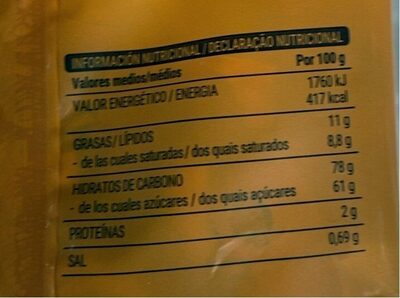Toffee - Hacendado - 100 g
Aquesta pàgina del producte no està completa. Podeu ajudar a completar-la editant-la i afegint-hi més dades a partir de les fotos ja disponibles, o fent-ne més amb l'aplicació de androide o iPhone / iPad. Gràcies!
×
Codi de barres: 8480000861122 (EAN / EAN-13)
Nom comú: Caramelos blandos de toffee
Quantitat: 100 g
Empaquetament:
en:Green dot
Marques: Hacendado
Categories: Snacks, Aperitius dolços, Llaminadures
Etiquetes, certificacions, premis: Lliure de gluten, No recomanat a persones específiques, No recomanat per infants menors de 3 anys
Botigues: Mercadona
Països on es va vendre: Espanya
Matching with your preferences
Entorn
Empaquetament
Transport
Espècies amenaçades
Report a problem
Fonts de dades
Producte afegit per kiliweb
Última modificació de la pàgina del producte per alia.
La pàgina del producte, també editada per roboto-app, yuka.sY2b0xO6T85zoF3NwEKvlmlEbsP_hmjBEBXiwh3bm_qODoDSQdwrw67LE6o.








